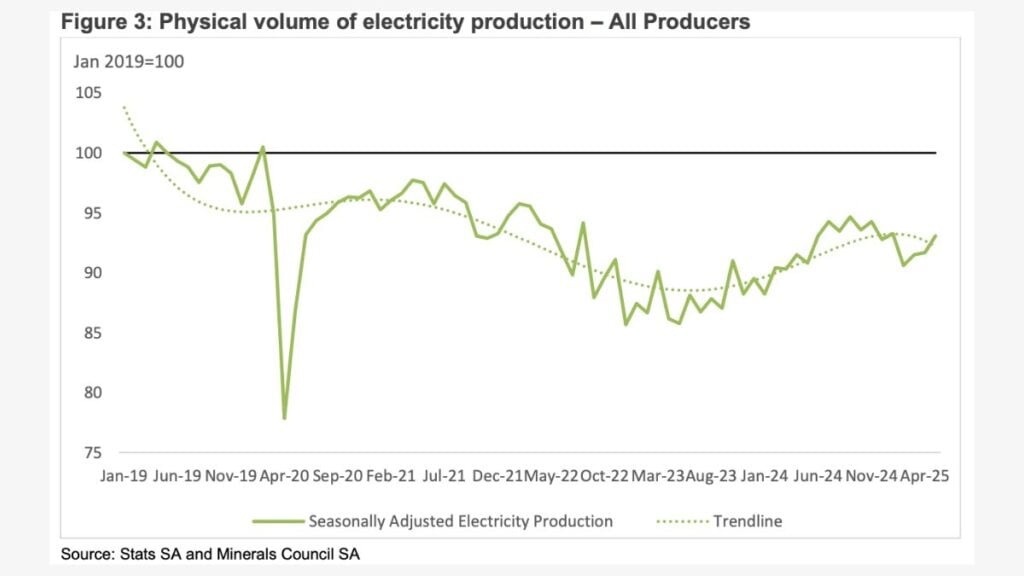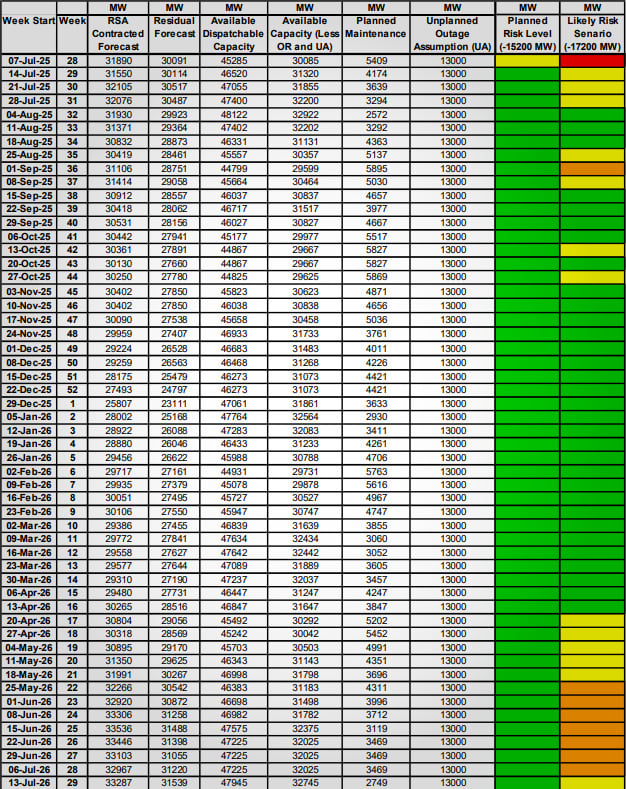Good news for Eskom customers in South Africa

There’s good news for South Africans as Eskom’s power generation performance shows encouraging signs of stability.
This was highlighted in the Minerals Council South Africa (MCSA)’s electricity update for June 2025, which is an analysis of the power system by its chief economist, André Lourens.
According to the MCSA, electricity production has steadily improved since early 2024, with a clear upward trend continuing into mid-2025.
Eskom’s Energy Availability Factor (EAF), the percentage of time power stations are available to produce electricity, improved significantly in June 2025. The EAF averaged 60.6%.
This marks the first time this year that it has exceeded 60% for a whole month, and this improved EAF is an important milestone.
“It reflects better plant performance, aided by strategic operational decisions and reduced planned maintenance, which helped avoid loadshedding during June, despite increased winter demand,” said Lourens.
Lourens also noted that EAF typically rises in winter as Eskom scales back planned maintenance and boosts dispatchable capacity to meet peak seasonal demand.
“In early June, Eskom returned about 2,500 MW of generation capacity just ahead of a cold front, anticipating a spike in household electricity usage,” he said.
“Emergency reserves were sufficient and used strategically to balance the grid, even as the system came under pressure.”
Eskom managed to stay under that critical 15,000 MW threshold for most of June and has continued to do so into July. Lourens explained that this was key to avoiding blackouts.
“Although the EAF remains below the levels seen in 2024, a year that saw nine months without any loadshedding, it’s still well above where we were in 2023, and that’s an important step in the right direction,” he said.
While electricity production is still below January 2019 levels, it is averaging around 16,800 gigawatt hours (GWh) per month.
That’s up from earlier in the year, although still short of the 17,100 GWh monthly average in 2024 and significantly lower than the 19,000 GWh peak in 2019.
“We expect Eskom’s output to edge slightly higher over the remainder of 2025, particularly in July and August due to winter demand, and could average just above 17,000 GWh per month,” said Lourens.
“But a full recovery to 2019 levels remains out of reach for now.” Despite this, indicators suggest Eskom is mostly out of the woods when it comes to loadshedding this winter.

More positive signs
In its own Winter Outlook, Eskom projected that as long as unplanned outages remain below 13,000 MW, the country should avoid load-shedding altogether.
If outages hit the 15,000 MW mark, load shedding would be limited to a maximum of 21 days out of the 153-day winter period and capped at Stage 2.
Recent data suggests that Eskom is staying on track. Since 1 July 2025, its hourly unplanned capacity loss factor (UCLF) has been trending below the 15,000 MW level.
This improvement is also shown in the National Transmission Company South Africa’s (NTCSA) latest 52-week generation adequacy outlook, covering 7 July 2025 to 13 July 2026.
The report forecasts that Eskom will have sufficient generation capacity to meet electricity demand and reserve margins throughout most of the year.
The NTCSA uses two scenarios in its outlook: a “planned risk” scenario, which assumes unplanned outages of 15,200 MW, and a more conservative “likely risk” scenario that factors in 17,200 MW of unplanned outages.
Even under the higher-risk scenario, the system holds up reasonably well.
While these developments don’t eliminate all concerns, particularly given the ongoing vulnerability to breakdowns, the latest data points to a period of improved stability for South Africa’s power grid.
“Sustained system stability will depend on minimising unplanned breakdowns, but Eskom is operating near its peak production level and appears to be managing the pressure well so far,” said Lourens.
Eskom and the NTCSA’s 52-week outlook from 07 July 2025 to 13 July 2026, and Eskom’s UCLF and OCLF charts for the past two weeks.
The red dashed line on the UCLF chart found below shows the 15,000MW threshold Eskom announced during its outlook for the 2025 winter period.
Eskom 52-week outlook

Eskom UCLF: 29 June to 12 July 2025





















